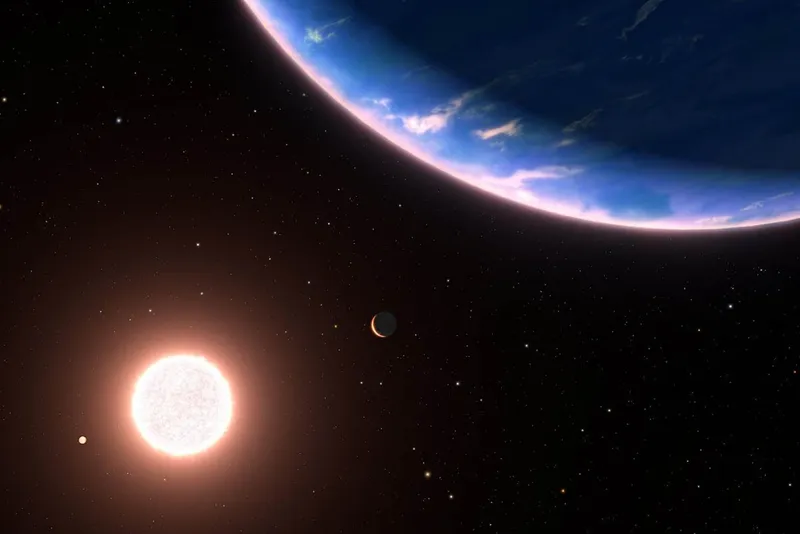The Hubble Space Telescope has found water vapour in the atmosphere of a small rocky planet orbiting a star beyond our Solar System.
Exoplanet GJ 9827d is about twice as big as Earth, making it the smallest planet around another star where water water has been detected.
While Hubble's analysis of the exoplanet has not determined whether a small amount of water vapour exists in GJ 9827d's atmosphere, or whether it's mostly made of water, this is a further step in understanding how common the presence of water is on other planets in our Galaxy.
"This would be the first time that we can directly show through an atmospheric detection that these planets with water-rich atmospheres can actually exist around other stars," says Björn Benneke of the Université de Montréal, a member of the team that made the discovery.
"This is an important step toward determining the prevalence and diversity of atmospheres on rocky planets."
What is GJ 9827d like?

GJ 9827d orbits a red dwarf star every 6.2 days. The star, GJ 9827, is 97 lightyears from Earth in the constellation Pisces.
The planet is as hot as Venus, at about 420°C, so if its atmosphere is indeed mostly water vapour, it would be an incredibly steamy, scorching hot world.
GJ 9827d could either be a mini-Neptune planet with a hydrogen-rich atmosphere laced with water.
Or it could be like Jupiter's icy moon Europa - although much warmer - with a large ocean.
"Water on a planet this small is a landmark discovery," says co-principal investigator Laura Kreidberg of Max Planck Institute for Astronomy in Heidelberg, Germany.
"It pushes closer than ever to characterising truly Earth-like worlds."
Understanding GJ 9827d's formation
If GJ 9827d does indeed have a water-rich atmosphere, the team behind the study say this must mean it formed farther away from its host star than its current orbit.
At that distance, the temperature would be much colder and water could exit in the form of ice.
The planet would have then migrated inwards over time and been blasted by solar radiation, causing hydrogen in its atmosphere to heat and escape.
Or, GJ 9827d may have formed close to its star, with a trace of water in its atmosphere.
How Hubble detected water at GJ 9827d

A series of observations by the Hubble Space Telescope used the transit method of exoplanet study.
Astronomers observe as an exoplanet passes in front of its host star, and can then analyse starlight passing through the planet's atmosphere in order to detect what chemicals are in the atmosphere.
Hubble observed 11 transits of GJ 9827d and found the spectral fingerprint of water molecules.
GJ 9827d was initially discovered by the retired NASA Kepler Space Telescope in 2017.
Read the full paper at iopscience.iop.org/article/10.3847/2041-8213/acebf0
